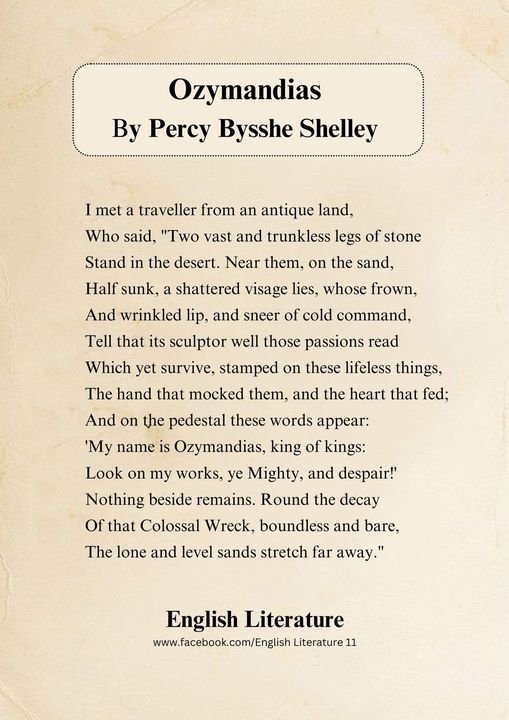Percy Bysshe Shelley’s

⟫⟫ Introduction of the sonnet
Percy Bysshe Shelley’s “Ozymandias”, a masterpiece of Romantic poetry, unravels the inevitable decay of power and the transient nature of human glory. Written in 1817, this sonnet reflects Shelley’s fascination with antiquity and his philosophical musings on time, hubris, and the ephemeral nature of earthly dominion. Inspired by an ancient statue of the Egyptian Pharaoh Ramesses II, the poem explores the paradox of a ruler’s immense pride juxtaposed against the sands of oblivion.
Within its fourteen lines, Shelley conjures a haunting image of a shattered monument, the once-proud inscription mocking the fate of those who dare defy time’s inexorable march. The poem resonates as a cautionary tale, reminding humanity that all empires, no matter how grand, are destined to crumble beneath the weight of time.
⟫⟫ Summary of the poem
The poem begins with a traveler recounting his encounter with the ruins of a colossal statue in a desolate desert. Two vast and broken legs stand isolated in the sand, while the statue’s face, half-buried and weathered, still bears the unmistakable expression of arrogance and command. The sculptor’s skill immortalized the ruler’s disdain and power, capturing the essence of a tyrant’s character.
On the pedestal, an inscription reads:
“My name is Ozymandias, King of Kings;
Look on my Works, ye Mighty, and despair!”
Yet, surrounding the ruins lies only endless, empty sands—silent witnesses to the collapse of the once-great empire. The “works” Ozymandias boasts of are long gone, consumed by time’s relentless erosion. The poem concludes with a stark image of solitude: the boundless desert enveloping the ruins, emphasizing the futility of human pride and ambition.
Shelley’s “Ozymandias” stands as a timeless meditation on the arrogance of power and the enduring truth of impermanence, etched into the shifting sands of eternity.
Leave a Reply